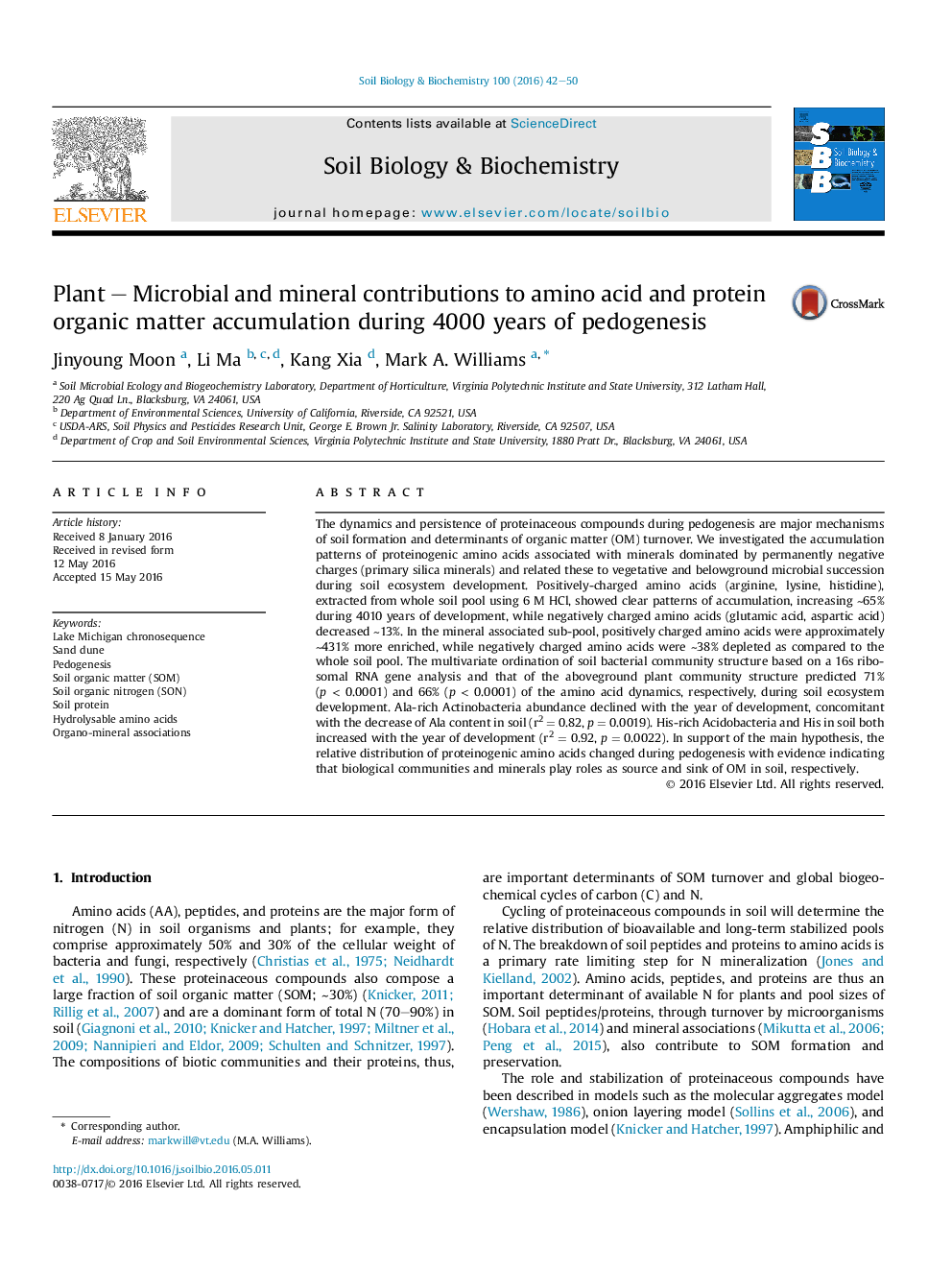| Article ID | Journal | Published Year | Pages | File Type |
|---|---|---|---|---|
| 8363436 | Soil Biology and Biochemistry | 2016 | 9 Pages |
Abstract
The dynamics and persistence of proteinaceous compounds during pedogenesis are major mechanisms of soil formation and determinants of organic matter (OM) turnover. We investigated the accumulation patterns of proteinogenic amino acids associated with minerals dominated by permanently negative charges (primary silica minerals) and related these to vegetative and belowground microbial succession during soil ecosystem development. Positively-charged amino acids (arginine, lysine, histidine), extracted from whole soil pool using 6 M HCl, showed clear patterns of accumulation, increasing â¼65% during 4010 years of development, while negatively charged amino acids (glutamic acid, aspartic acid) decreased â¼13%. In the mineral associated sub-pool, positively charged amino acids were approximately â¼431% more enriched, while negatively charged amino acids were â¼38% depleted as compared to the whole soil pool. The multivariate ordination of soil bacterial community structure based on a 16s ribosomal RNA gene analysis and that of the aboveground plant community structure predicted 71% (p < 0.0001) and 66% (p < 0.0001) of the amino acid dynamics, respectively, during soil ecosystem development. Ala-rich Actinobacteria abundance declined with the year of development, concomitant with the decrease of Ala content in soil (r2 = 0.82, p = 0.0019). His-rich Acidobacteria and His in soil both increased with the year of development (r2 = 0.92, p = 0.0022). In support of the main hypothesis, the relative distribution of proteinogenic amino acids changed during pedogenesis with evidence indicating that biological communities and minerals play roles as source and sink of OM in soil, respectively.
Related Topics
Life Sciences
Agricultural and Biological Sciences
Soil Science
Authors
Jinyoung Moon, Li Ma, Kang Xia, Mark A. Williams,
